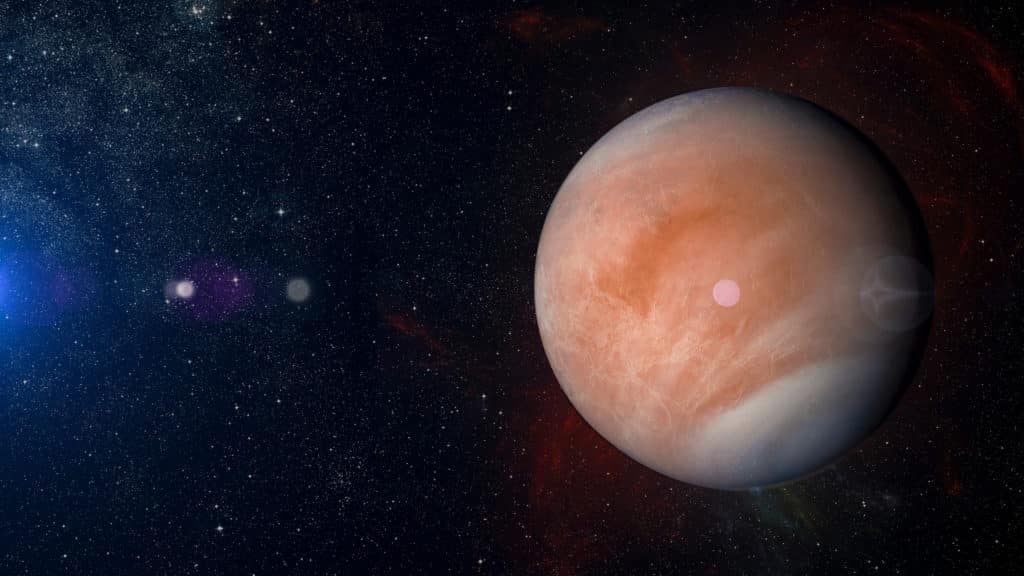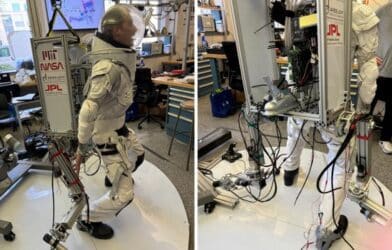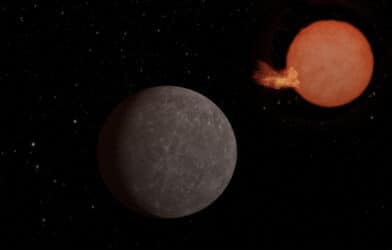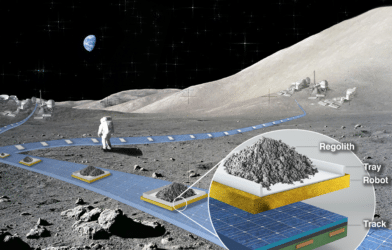A joint mission from the European Space Agency and the Japan Aerospace Exploration Agency captured a remarkable moment on Venus. In August 2021, as the BepiColombo spacecraft swung by the scorching world on its journey to Mercury, it managed to capture a fleeting glimpse into a never-before-explored region of the planet’s induced magnetosphere. The spacecraft’s onboard Mass Spectrum Analyzer (MSA), designed to study ions at Mercury, unexpectedly detected the presence of cold oxygen and carbon ions flowing out from Venus at a surprisingly high rate.
Venus, often called Earth’s sister planet due to their similar size and composition, lacks an intrinsic magnetic field. As a result, the solar wind, a constant stream of charged particles from the Sun, directly impacts Venus’s upper atmosphere, stripping away ions and sending them into space. While previous missions like Venus Express and Pioneer Venus Orbiter have studied the planet’s ion escape processes, BepiColombo’s flyby allowed researchers to investigate a new area: the distant magnetosheath flank, located about six planetary radii from Venus.
During a brief 17-minute window, BepiColombo’s instruments recorded an average total flux of oxygen and carbon ions around 40,000 per square centimeter per second. This flux, comparable to squeezing the contents of a can of soda through a straw every second, is a significant finding that sheds new light on atmospheric escape at Venus. The remarkable study is published in the journal Nature Astronomy.
“This is the first time that positively charged carbon ions have been observed escaping from Venus’s atmosphere,” says lead study author Lina Hadid, a National Center for Scientific Research scientist at the Plasma Physics Laboratory (LPP), in a media release. “These are heavy ions that are usually slow moving, so we are still trying to understand the mechanisms that are at play. It may be that an electrostatic ‘wind’ is lifting them away from the planet, or they could be accelerated through centrifugal processes.”
Researchers believe that these ions, with energies around 18 electron volts (a measure of energy at the atomic scale), are likely accelerated by an “ambipolar” electric field. This field arises from the separation of electrons and ions along the magnetic field lines draped around the planet by the solar wind interaction. Like a cosmic electric wind, it gives the ions an extra kick, pushing them to escape velocities.
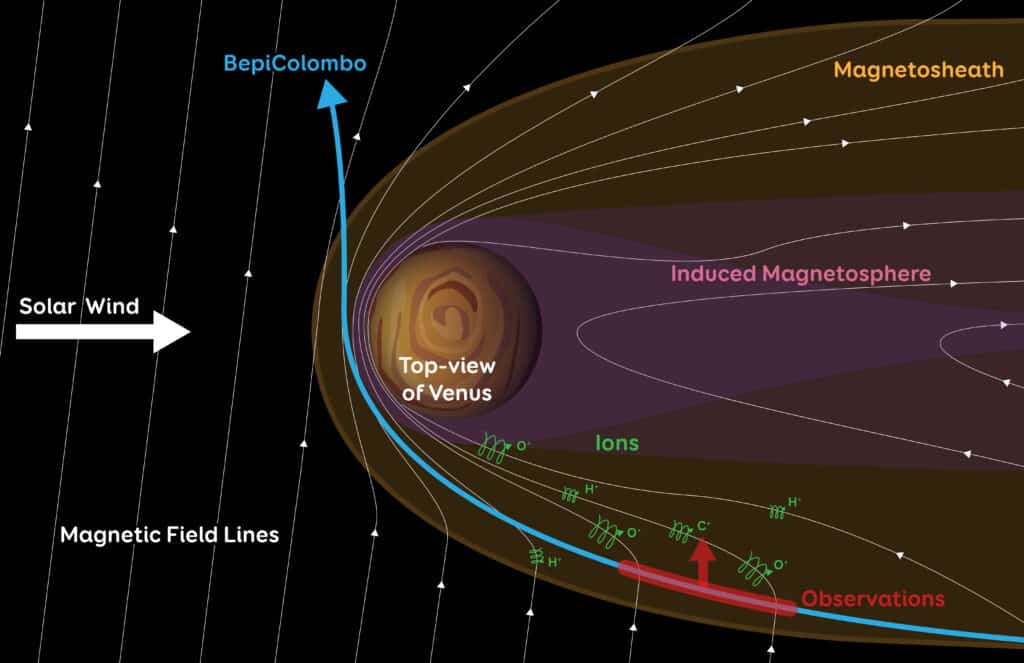
The detection of escaping carbon ions, in particular, marks a first for the Venus environment. The ratio of carbon to oxygen ions was found to be at most 0.31 ± 0.2, implying that in addition to atomic oxygen ions, other sources like carbon monoxide or water ions may have contributed to the observed oxygen ion population.
“This result shows the unique results that can come out of measurements made during planetary flybys, where the spacecraft may move through regions generally unreachable by orbiting spacecraft,” notes Nicolas André, of the Institut de Recherche en Astrophysique et Planétologie (IRAP) and lead of the SPIDER service.
These findings have important implications for understanding the evolution of Venus’ atmosphere over time, especially concerning the planet’s water history. By characterizing the present-day escape of ions, scientists can work backwards to estimate the total atmospheric loss over billions of years. This atmospheric erosion likely played a crucial role in transforming Venus from a potentially habitable world with liquid water oceans to the hellish, desiccated planet we see today.
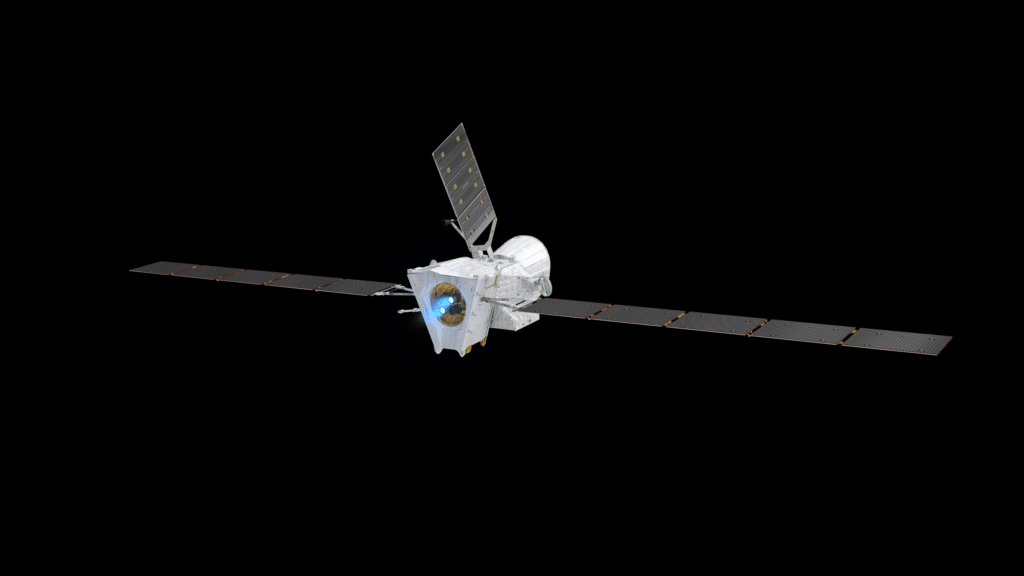
Furthermore, studying atmospheric escape processes at Venus can provide valuable insights into the evolution of atmospheres on other terrestrial planets, like Mars, and even rocky exoplanets orbiting other stars. As the roster of known exoplanets continues to grow, with many falling into the “super-Venus” category, understanding the mechanisms that shape planetary atmospheres becomes increasingly critical.
“Recent results suggest that the atmospheric escape from Venus cannot fully explain the loss of its historical water content. This study is an important step to uncover the truth about the historical evolution of the Venusian atmosphere, and upcoming missions will help fill in many gaps,” says study co-author Moa Persson, of the Swedish Institute of Space Physics.
BepiColombo’s serendipitous Venus findings underscore the importance of taking advantage of every opportunity to gather scientific data, even during a mission’s cruise phase en route to its primary target. As the spacecraft continues on its journey to Mercury, planetary scientists will eagerly await more groundbreaking discoveries about our cosmic neighborhood. In the meantime, the unexpected detection of escaping carbon and oxygen ions at Venus serves as a poignant reminder of the dynamic and ever-evolving nature of our solar system, and the critical role that chance encounters can play in advancing our understanding of it.
